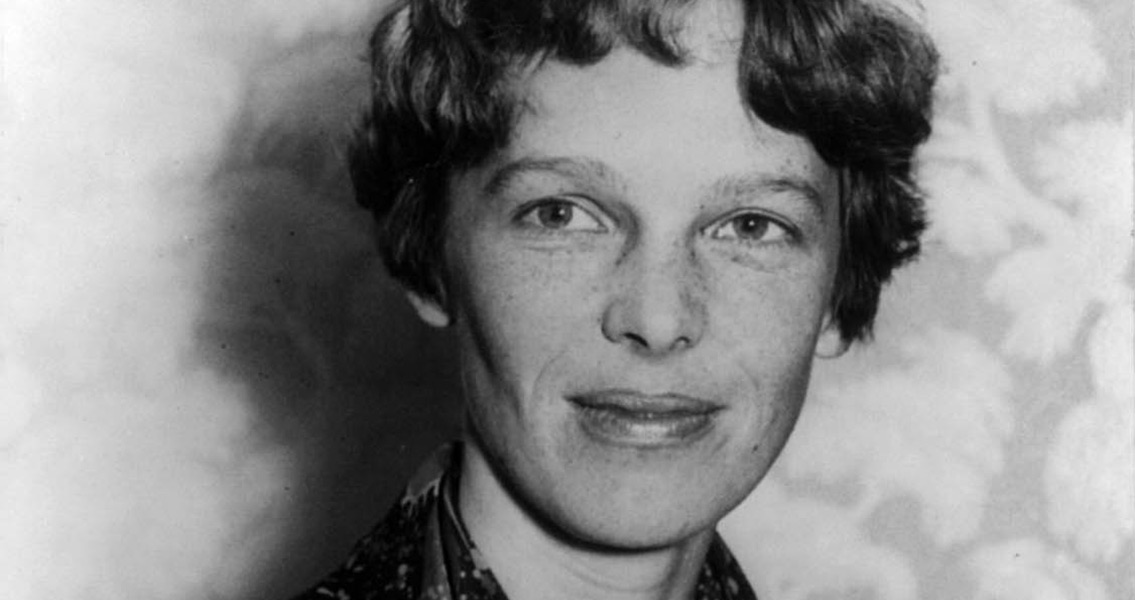<![CDATA[Amelia Mary Earhart, the first women to fly across the Atlantic Ocean solo, was an American aviation pioneer. When her plane disappeared over the Pacific Ocean in 1937 during an attempt to circumnavigate the globe, it was assumed she had crashed into the ocean and her remains were lost in deep waters. With no actual evidence, her fate became a mystery many are still fascinated by. When a partial skeleton was found on the island of Nikumaroro in the western Pacific Ocean in 1940, it was suspected that it may be Earhart’s. However, the bones were dismissed as belonging to a male and subsequently filed away and forgotten until 1998, when The International Group for Historic Aircraft Recovery (TIGHAR) found the original British files. Since finding the files, which included the original skeletal measurements, TIGHAR has been working to prove the bones recovered on the island belong to the American pilot. Forensic anthropologists Richard Jantz, Ph.D., and Karen Burns, Ph.D., re-evaluated the measurements and concluded the morphology of the recovered bones do appear consistent with a female of Earhart’s ethnic origin and height, disproving the original conclusion. Additionally, a peculiarity was found during the recent evaluation the first researchers wouldn’t have been aware of. In the original notes, the humerus (which was among the bones recovered) was reported as being 32.4 cm long, with a radius of 24.5 cm, making the ratio of radius to humerus 0.756. Statistically, in women born at the same time as Earhart (late nineteenth century), this ratio was 0.73, meaning if the skeleton belonged to an ethnically European, middle-aged woman, she would have had forearms that were significantly longer than average. Partnering with Jeff Glickman, a forensic imaging specialist, an analysis of historical photos of Earhart with her arms fully visible was performed and it was found that Earhart's forearms were essentially identical to the skeleton’s "Until we started investigating the skeleton, we found what history knew was that Amelia Earhart died on July 2nd, 1937, in a plane crash. But there is an entire final chapter of Earhart's life that people don't know about. She spent days -- maybe months -- heroically struggling to survive as a castaway," TIGHAR's executive director, Ric Gillespie, told CNN. The TIGHAR team has already revealed historical documents conceivably showing that Earhart had sent over 100 radio transmissions between July 2nd and July 6th of 1937, calling for help. If true, this rules out the possibility that her plane crashed, because the airplane's radio wouldn’t have worked without the engine running. "There are historical documents that prove official airlines received radio calls for help in 1937. If we look at the press of the time - people believed she was still alive. It was only when planes were sent to fly over the islands where the distress signals were coming from and no plane was seen that the searches shifted towards the ocean," Gillespie tells CNN. TIGHAR’s theory is that her plane wasn’t seen because the waves would have dragged it back into the ocean by the time the rescue planes arrived. Beginning in the 1990s, three archeological expeditions have been organized by Gillespie to explore Nikumaroro and the area where the bones were discovered. "We found records of bonfires being lit in the area where the bones were found. Based on the fish bones and bird bones found in the area, Earhart survived weeks, maybe even months, in that island," Gillespie told CNN, adding: "We believe she survived heroically, and alone, for a period of time, in terrible circumstances. History needs to tell her story right." While the island has no drinkable water, Gillespie believes it could have been gathered from rain and tree leaves. No other remains were discovered in the area, indicating that Frederick J. Noonan, Earhart's navigator, died directly after the crash; his body swept away by the ocean. This theory is supported by the initial distress calls in which she reported that he had been injured. None of this new information conclusively proves that Amelia Earhart was on Nikumaroro but it definitely tips the scales in that direction. Amelia Earhart was awarded the U.S. Distinguished Flying Cross following her solo flight across the Atlantic. In addition to setting a number of aviation records, she wrote best-selling books describing her experiences flying and was instrumental in the creation of an organization for female pilots called The Ninety-Nines. ]]>
Findings Tip the Scale to Earhart Surviving Plane Crash
